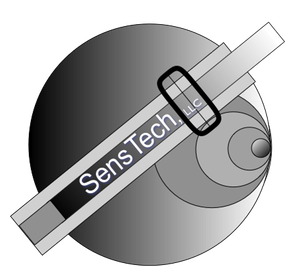Sub Aquatic Vegetation (SAV)
SAV has become an issue at Deep Creek Lake. There are several coves that report having excessive SAV. One of the species, Eurasia Watermilfoil (EW)((Myriophyllum spicatum) has been found in a number of places around the lake, but mostly in the southern part. EW is listed as an "invasive" species, meaning that it is not a native plant (but then the lake is not a native lake!) EW is a problematic plant, in that its growth is often difficult to control and, as a result, it can alter a water body's ecology.
So far, according to DNR studies, it is not yet a problem for Deep Creek Lake, but preventive and remedial measures are being looked at.
Dr. Ken Fisher, a retired botanist with experience in the use of pesticides, field trials, and study protocols, and a long-time lake resident, has done an assessment of the SAV issues of Deep Creek Lake and evaluated the proposed use of 2,4-D by DNR, in a pilot program, to control EW. His report can be found here.
His review and evaluation resulted in the following conclusions:
- The data collected by DNR since 2010 do not establish that EW is dominating and supplanting the native watermilfoil species and other SAV species present in DCL.
- Additional annual surveys of DCL SAV populations are needed to firmly establish whether EW is an aggressive invasive species or not.
- The data collected in the SAV surveys confirm studies of other freshwater lakes, that healthy populations of SAV have beneficial effects on freshwater ecosystems.
- In DCL, problems with SAV are evident in selected shallow areas and coves where varying water levels result in dense beds of SAV, especially in late summers when inadequate rainfall occurs and water levels are down.
- The weight of evidence from studies of SAV and existence of EW in DCL to date suggest that additional data is needed to establish if and when EW will overrun the native SAV species of the lake.
- The use of chemical control measures, such as 2,4-D, even in a limited trial, appears, at this time, to be a short-sighted approach to the larger issues associated with SAV impacts on human activities.
A collection of other material dealing with SAV and EW, as it's relevant to Deep Creek Lake, is listed below.
- An Aquatic Plant Identification Manual - An On-line Version of an Aquatic Plant Identification Manual for Washington's Freshwater Plants of the State of WashingtonPlant habitat and growth form..
- What are the different kinds of SAVs? - The following publication from Purdue University describes the various types of SAVs.
- What kind of SAVs are in our lake? - Specific to the State of Maryland is a resource guide published by the DNR. This provides some indication.
- AquaPlant - From Texas A&M Agrilife Extension: A Pond ManagerDiagnostic Tool. Provides images and text to help identify sub-aquatic vegetation.
- Apendix A - From a DNR report on subaquatic vegetation present in Deep Creek Lake. Note the links to other sources of SAV descriptions.





